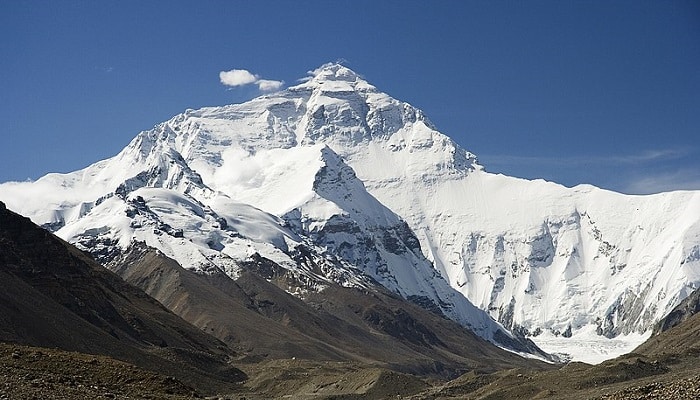Mount Everest is the highest mountain in the world with an altitude of approximately 8.8 km. It is located in the Himalayan range on the border between China and Nepal. The first person to reach the top of the mountain was Englishman Edmund Hillary in 1953.
Since then, more than 4,000 people have conquered the mountain. However, around 280 people have died trying to reach the top of Everest. The extreme altitude and weather conditions make it a challenge for anyone willing to take it on.
One of the fun facts about Mount Everest is that it keeps growing every year. This happens because the tectonic plate of India continues to move northwards, pushing the Himalayan range upwards. The growth rate is approximately 4 cm per year.
Why does Mount Everest grow every year?
Mount Everest is the highest point on Earth with an altitude of approximately 8.8 km. Its location is in the Himalayan range, which separates Asia from the rest of the world. The mound's altitude was first measured in 1856 by British geographer Radhanath Sikdar, but its height has been questioned ever since.
The main reason for the growth of Mount Everest is due to the tectonic activity of the Earth's plates. The India Plate is slowly moving northwards and going downwards under the Eurasian Plate. As a result, the Himalayan range is being lifted at a rate of nearly
While Mount Everest's growth is largely due to plate tectonic activity, there are other factors that can affect its height. For example, sea levels are rising due to global warming, which means that the mountain's altitude is also increasing. In addition, erosion can contribute to the growth of the mound, as it removes rocks and sand from its flanks.4 cm per year. This means that the top of Mount Everest is rising at a rate of almost 4 cm per year.
While Mount Everest's growth is largely due to plate tectonic activity, there are other factors that can affect its height. For example, sea levels are rising due to global warming. In addition, erosion can contribute to the growth of the mound, as it removes rocks and sand from its flanks.
What is the current height of Mount Everest?
Mount Everest is the highest mountain in the world with an altitude of 8,848 meters. The mountain's height has been increasing since it was first measured in 1856. This is due to tectonic activity in the collision zone between the Indian and Eurasian plates. As the Indian plate moves north, it bumps into Eurasia, causing the rock blocks that make up the Himalayas to move. This movement causes the rocks to be pushed upwards, increasing the mountain's altitude.
How to get to the top of Mount Everest?
Mount Everest is the highest mountain in the world with an altitude of 8,848 meters. To reach the top requires a lot of preparation and training, as well as an experienced guide.
The ascent can be divided into two parts: the first is to Base Camp, which is 5,364 meters high, and the second is the summit, which is the peak of the mount. The first part of the journey is done by land transport, while the second part needs to be done on foot.
Training for the ascent of Mount Everest requires a lot of effort and dedication. In addition to training your altitude endurance, you will also need to get used to using climbing equipment such as ropes and spikes.
The journey to the top of the mountain is also very demanding, with days of walking at a fast pace and sleeping in tents at higher altitudes. In total, the trip to the top of Mount Everest can take up to two months. of earth and avalanches. These dangers mean that climbers need to be extremely cautious when climbing Mount Everest these days.
After all, did you like to know more about it? Let us know in the comments and don't forget to share with your friends and family.


